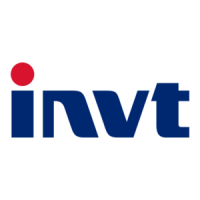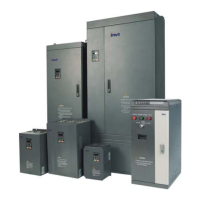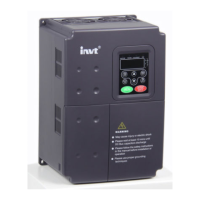What does external fault mean on INVT CHE100-1R5G-S2 DC Drives?
- CCarl PachecoSep 8, 2025
If the INVT DC Drive displays an external fault, it means the external fault input terminal is active. Inspect the external equipment.
What does external fault mean on INVT CHE100-1R5G-S2 DC Drives?
If the INVT DC Drive displays an external fault, it means the external fault input terminal is active. Inspect the external equipment.
What causes current detection fault in INVT CHE100-1R5G-S2?
If the INVT DC Drive displays a current detection fault, it could be due to loose wires or connectors on the control board, a damaged Hall sensor, or an abnormal amplifying circuit. Check the wiring.
How to fix autotuning fault in INVT CHE100-1R5G-S2?
If the INVT DC Drive displays an autotuning fault, it could be due to improper settings of the motor's rated parameters or the autotuning process timing out. Set the rated parameters according to the motor nameplate and check the motor’s wiring.
What does EEPROM fault mean in INVT CHE100-1R5G-S2?
If the INVT DC Drive displays an EEPROM fault, it indicates a read/write fault of control parameters. Press STOP/RESET to reset.
What causes PID feedback fault in INVT CHE100-1R5G-S2?
If the INVT DC Drive displays a PID feedback fault, it could be due to a disconnected PID feedback or a disappearing PID feedback source. Inspect the PID feedback signal wire and the PID feedback source.
How to troubleshoot brake unit fault in INVT DC Drives?
If the INVT DC Drive shows a brake unit fault, it could be due to braking circuit failure, a damaged brake tube, or too low resistance of the externally connected braking resistor. Inspect the braking unit and replace the braking tube if necessary. Increase the braking resistance.
| Model | CHE100-1R5G-S2 |
|---|---|
| Power | 1.5 kW |
| Frequency Range | 0-400 Hz |
| Control Method | V/F Control, Sensorless Vector Control |
| Overload Capacity | 150% for 60 seconds |
| Cooling Method | Forced Air Cooling |
| Enclosure Rating | IP20 |
| Weight | 1.2kg |
| Rated Current | 7.0A |
| Protection Features | Overcurrent, overvoltage, undervoltage, overload, overheating, short circuit |
| Communication Interface | RS485 (Modbus RTU) |
| Operating Temperature | -10°C to +50°C |
| Storage Temperature | -20°C to +60°C |
| Humidity | 5-95% RH (non-condensing) |
| Altitude | Below 1000m |
Explains the meaning of WARNING and CAUTION symbols and lists key safety warnings.
Specifies environmental conditions and clearance needed for inverter installation.
Emphasizes training, proper lifting, fireproofing, and cooling fan requirements.
Lists critical wiring warnings for safety, including grounding and insulation testing.
Presents a comprehensive diagrams for main circuit and inverter-side wiring.
Explains common DC bus method and proper grounding (PE) procedures.
Lists terminal functions and explains jumper settings on the control board.
Illustrates the typical connection diagram for peripheral devices to the inverter.
Details wiring for DC reactors and braking units at the inverter's main circuit side.
Advises using shielded cables and connecting the ground terminal to the shield wire for control circuits.
Details main circuit terminal configurations and control circuit terminal functions.
Discusses wiring for output reactors, EMC filters, and regenerative units at the motor side.
Shows the terminal configuration for control circuits, including digital and analog inputs/outputs.
Covers noise control, site wiring, grounding, leakage current, and EMC filter recommendations.
Describes the keypad layout, functions of each key, and indicator lights.
Outlines the process for setting parameters through the menu structure.
Covers inverter operation modes, fault information, and the quick testing procedure.
Explains fault reset procedures and the motor parameter autotuning process.
Covers fundamental functions like control mode selection and run command source.
Lists function parameters related to starting and stopping the inverter.
Lists function parameters for configuring output terminals.
Lists function parameters related to the display interface and user settings.
Lists function parameters for enhanced inverter functions.
Lists function parameters for PID control functionality.
Lists function parameters for configuring motor characteristics.
Lists function parameters specific to vector control mode.
Lists function parameters for V/F control mode.
Lists function parameters for configuring input terminals.
Lists common fault codes and details IGBT and overcurrent faults with reasons and solutions.
Details faults related to voltage issues, motor/inverter overload, and phase failures.
Provides guidelines for performing maintenance, inspections, and replacements.
Lists critical warnings and precautions for performing maintenance safely.
Outlines daily inspection procedures to ensure smooth inverter operation.
Describes periodic checks and replacement schedules for wearing parts.












